
The antlions are a group of about 2,000 species of insect in the neuropteran family Myrmeleontidae. They are known for the predatory habits of their larvae, which mostly dig pits to trap passing ants or other prey. In North America, the larvae are sometimes referred to as doodlebugs because of the marks they leave in the sand. The adult insects are less well known due to their relatively short lifespans compared to the larvae. Adults, sometimes known as antlion lacewings, mostly fly at dusk or after dark and may be mistakenly identified as dragonflies or damselflies.

Chaoboridae, commonly known as phantom midges or glassworms, is a family of fairly common midges with a cosmopolitan distribution. They are closely related to the Corethrellidae and Chironomidae; the adults are differentiated through peculiarities in wing venation.
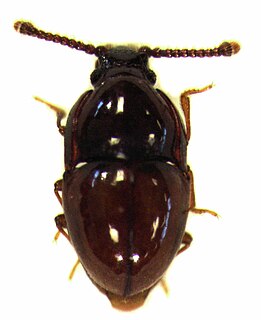
Cryptophagidae is a family of beetles with representatives found in all biogeographic realms. Members of this family are commonly called silken fungus beetles and both adults and larvae appear to feed exclusively on fungi although in a wide variety of habitats and situations, such as rotting wood and shed animal fur and feathers. These beetles vary from about 1 to 11 millimeters long, and usually have an oval body shape with a slight "waist".
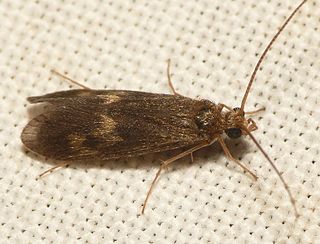
The Polycentropodidae are a family of trumpet-net and tube-making caddisflies. There are at least 30 genera and 720 described species in Polycentropodidae. The type genus for Polycentropodidae is Polycentropus J. Curtis, 1835.
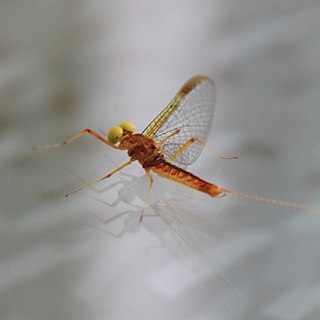
Heptagenia is a genus of flatheaded mayflies in the family Heptageniidae. There are at least 20 described species in Heptagenia.

Kateretidae is a family of short-winged flower beetles in the suborder Polyphaga. There are about 11 genera and at least 40 described species in Kateretidae. They are found worldwide except in New Zealand. Adults are anthophagous, feeding on flowers, while the larvae are spermatophagous inside the flower corolla.

Boreus is the most diverse of three genera of insects in the family Boreidae. They are commonly known as winter scorpionflies due to their close relation to the true scorpionflies and preference for cold habitats.
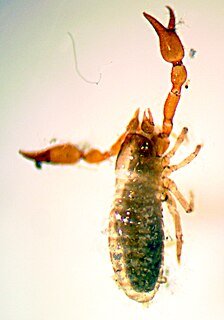
Microbisium is a genus of pseudoscorpions in the family Neobisiidae. There are about 12 described species in Microbisium.

Agrypnia is a genus of giant caddisflies in the family Phryganeidae. There are about 19 described species in Agrypnia.

Stenophylacini is a tribe of northern caddisflies in the family Limnephilidae. There are at least 20 genera and 190 described species in Stenophylacini.

Macrostemum is a genus of netspinning caddisflies in the family Hydropsychidae. There are at least 90 described species in Macrostemum.
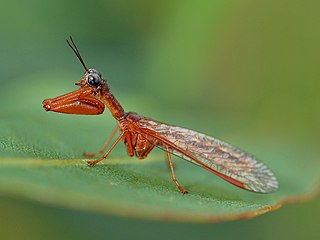
Mantispinae is a subfamily of mantidflies in the family Mantispidae. There are at least 30 genera and 310 described species in Mantispinae.

Brachynemurus is a genus of antlions in the family Myrmeleontidae. There are at least 20 described species in Brachynemurus.

Limnephilinae is a subfamily of northern caddisflies in the family Limnephilidae. There are at least 65 genera and 600 described species in Limnephilinae.

Chilostigmini is a tribe of northern caddisflies in the family Limnephilidae. There are about 12 genera and at least 40 described species in Chilostigmini.
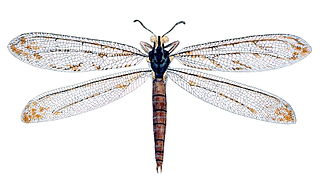
Vella is a genus of antlions in the family Myrmeleontidae. There are about five described species in Vella.

Leucochrysini is a tribe of green lacewings in the family Chrysopidae. There are 7 genera and 213 described species in Leucochrysini.

Dicosmoecinae is a subfamily of northern caddisflies in the family Limnephilidae. There are about 19 genera and at least 80 described species in Dicosmoecinae.
Marilia is a genus of mortarjoint casemakers in the family Odontoceridae. There are at least 40 described species in Marilia.




















